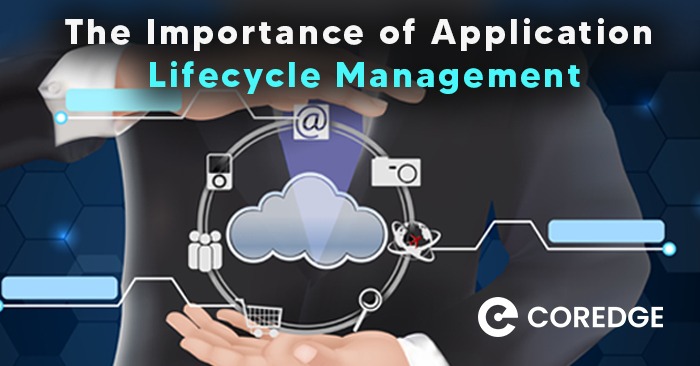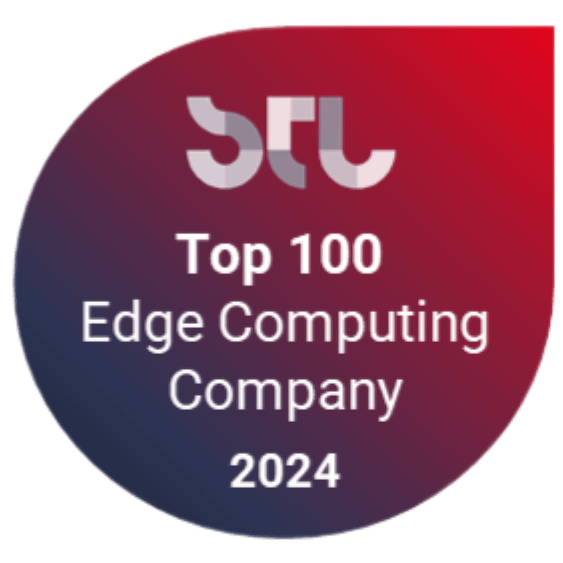Maximizing Efficiency and Minimizing Risk: The Importance of Application Lifecycle Management
Coredge Marketing
March 28, 2023

The development of software applications is associated to application lifecycle management. The demand for applications is growing along with the application market’s rise. A perfect application must be delivered by an app developer within a week or a period of two to three days. Deadlines restrict their options, increasing the likelihood of unforeseen blockages. ALM (Application Lifecycle Management) must be incorporated into the app development process to increase app quality, and developer efficiency, and control such unforeseen mistakes.
Application Lifecycle Management continues to be in complete control of the software development process from the planning stage to the development, testing, and deployment phases. The main benefits of ALM software include assisting the development project at every stage and incorporating visibility, traceability, information, agility, and quality. ALM helps to deliver the product on schedule in addition to providing quality assurance. Now that you know a little bit about ALM and how it affects the development cycle through its methodologies, it’s time to explain the significance of ALM (Application Lifecycle Management) to the entire software development process.
- A smooth process for developing apps:
In addition to the app developer, standard operating procedures and documentation are also used when creating an app. The ALM tool may be used as a central repository for all data pertaining to the app development lifecycle and can be readily modified to incorporate these procedures and documentation.
Well, so how does it help?
When processes and resources are implemented in ALM, an overview of the complete process is provided. For example, execution by developers or testers will be traceable, leading to high accountability. Every team member can learn in-depth information about an app that can be used later by having all the information in one convenient location. - Preparing and organizing development process:
The application development lifecycle is managed by the ALM tool, as was previously indicated. The planning phase begins as soon as the client discloses the project’s requirements in order to align the project’s business demands and select an appropriate solution.
Resource planning becomes more effective using ALM solutions, which can include specialized tools for various requirements that can support both classic waterfall projects and agile development projects. - Managing project productivity and budget:
The first step when a client requests the construction of an app is to talk about the finances with a business or financial analyst.
An app developer may choose to use sandbox testing, which necessitates the creation of a closed environment for the developer to test the code in. Such circumstances sap IT budgets and productivity. Yet, combining software development with ALM does away with the need for various testing environments. The review and management processes are also more effective when everything is contained in a single piece of software. Hence, it reduces costs while increasing production. - Team administration and management:
In a business, team members are frequently assigned to different places. Yet for software development, they must collaborate closely with other team members. A simple and reliable network is necessary as a result of closely related teamwork. For a business developing ALM software, there is no need to be concerned about a lack of communication leading to mistakes or a halting of the application development process.
Every team member can see real-time strategy, requirements for changes, and project status, much like in ALM. As a result, managing remote teams and the workplace is simple. - Speed and quality importance:
Keeping track of everyone’s work progress and status increases the risk of errors, pushing deadlines, and reducing product quality if collaboration is poor. The integrated tools successfully deliver user requirements with high-quality software when a project uses ALM software. By the construction of a traceability pattern, an ALM tool aids in project inspection. As a result, the project is always current and error-free. - Importance of carrying the load:
It is possible for the project to become stuck at some time during the software development process, from the planning stage until its deployment. And to finish the process, a few wise decisions must be made. ALM is a technology that combines resources and processes, which helps in finding solutions at each stage of the software development process. Aiding company demands becomes efficient and quick with the proper allocation of resources, tools, and procedures. - Project and testing:
The ability of the team is the most important factor in any project’s success. Every team member, from the business analyst to the tester, must continue to be productive throughout the software development process in order to achieve the greatest results. Distributing and allocating tasks is one aspect of an ALM integrated software development project, but measuring work productivity, quality, and progress reports is another aspect that is crucial for a high-quality result.
A software or application is tested to ensure that there are no bugs or errors in it. An ALM product offers a platform for testing and development to work together, fostering active communication between the two teams. The benefit of this communication is demonstrated by the regular issue detection and speedy resolution of the same. As a result, the ALM tool eliminates any potential issues or gaps from the developers’ perspective. - Rolling updates and canary deployments:
For new versions of an application, common alternatives include rolling and canary deployments. One production environment is maintained by IT teams for a distributed application in a rolling deployment.
A copy of the application is hosted on each of its multiple servers or cloud instances. There is usually a load balancer that directs traffic between servers. IT administrators space out the change releases when deploying new versions of the program so that some servers or instances will experience the upgrade before others.
The IT team makes the new release available to some users before others in the canary deployment method, which is similar to the rolling deployment method. The canary method, however, targets specific users rather than specific servers to provide access to the latest program version. Understanding the caliber of the canary version you release is absolutely critical. You can’t easily determine whether your new version is prepared for wider deployment if you can’t monitor the canary’s behaviour.
As part of accepting full accountability for the full build-it, run-it paradigm (i.e., availability, reliability, and code quality), developers are increasingly required to comprehend these key metrics. This transition is made feasible by enabling monitoring for visibility and establishing precise performance measures and problem-solving benchmarks.
Conclusion:
Using the ALM tool can help you fulfill your customers requirement and provide a high-quality product within the allotted period. Despite the complexity of the development process, which involves clients, scrum masters, architects, developers, and testers, the ALM (application development lifecycle) solution will streamline the entire process, ensuring flawless execution and the best possible results.





